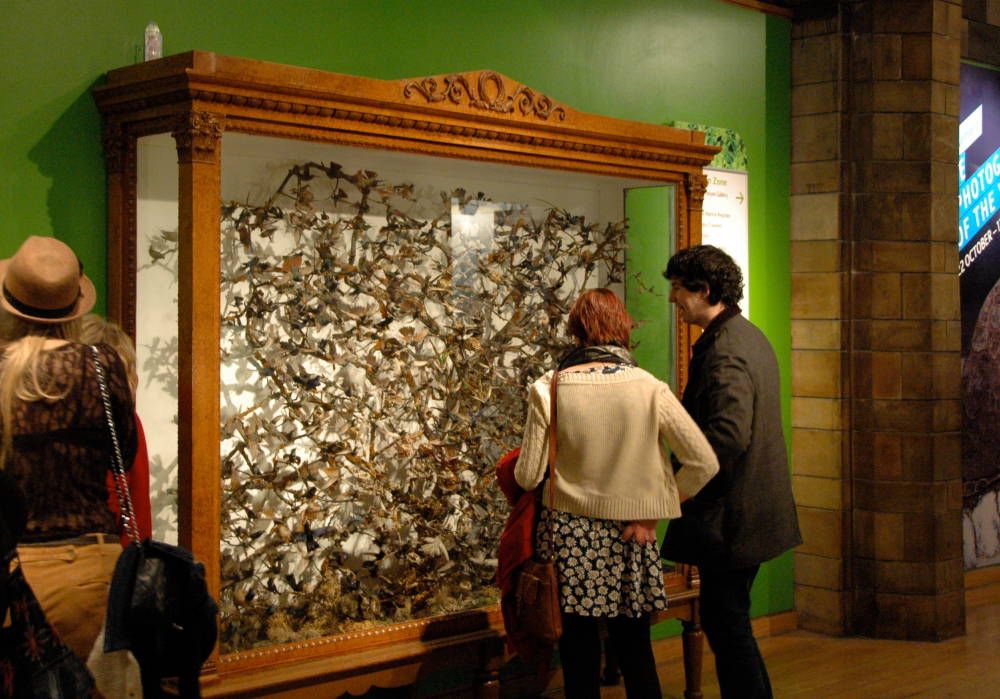Photographs by the author. You may use the images below without prior permission for any scholarly or educational purpose as long as you (1) credit the photographer and (2) link your document to this URL in a web document or cite the Victorian Web in a print one.]

An early nineteenth-century collection of stuffed birds in London's Natural History Museum. [Click on this image and those below to enlarge them.]
Stephen Jay Gould, the eminent evolutionary biologist and science writer, admits that until he had seen Victorian natural history museums, such as those in London and Dublin, cleaned and renovated, he had never appreciated their approach to exhibiting knowledge. As he points out, it differs from ours in fundamental ways:
The display of organisms in these museums rests upon concepts strikingly different from modern practice, but fully consonant with Victorian concerns: Today we tend to exhibit one or two key specimens, surrounded by an odd mixture of extraneous glitz and useful explanation, all in an effort to teach (if the intent be maximally honorable) or simply to dazzle (nothing wrong with that either). The Victorians, who viewed their museums as microcosms for national goals of territorial expansion and faith in progress fueled by increasing knowledge, tried to stuff every last specimen into their gloriously crowded cabinets — in order to show the full range of global diversity. . . . You can put one beetle in a cabinet (usually an enlarged model, and not a real specimen), surround it with fancy computer graphics and pushbutton wwhatzits, and then state that no other group maintains such diversity. Or you can fill the same cabinet with real beetles from each of a thousand different species — all of differing colors, shapes, and sizes — and then state that you have tried to display each kind in the country. [243]
The Victorians, he explains, preferred "this second approach, . . . which thrives upon an exquisite tension in commingling (not always comfortably, for they truly conflict)" two earlier traditions of collecting and displaying objects. On the one hand, Victorian museums draw upon the seventeenth-century "passion for displaying odd, deformed, peculiar, and 'prize' (largest, smallest, brightest, ugliest) specimens, the Wunderkammer (or 'cabinet of curiosities') of older collectors" (243-44). On the other, like Linnaeus and other Enlightenment thinkers, they desire "a systematic display of nature's regular order within a coherent and comprehensive taxonomic scheme" (244).


Two closer views of the birds in this cabinet, which much resembles Gould's description of Victorian displays.

A display of "odd, deformed, peculiar, and 'prize' (largest, smallest, brightest, ugliest) specimens". The author holds his hand above the Walters Art Museum's reconstruction of the kind of collection one could encounter in a Wunderkammer. This Baltimore museum has arranged an adjacent room as a wealthy collector's study room.
Bibliography
Gould, Stephen Jay. “Cabinet Museums: Alive, Alive, O!” Dinosaur in a Haystack: Reflections on Natural History. New York: Harmony Books, 1995. 238-47.
Last modified 18 November 2011